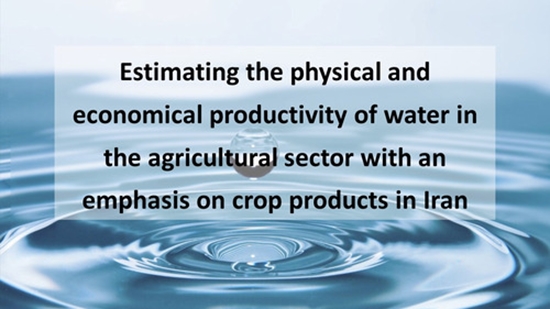Estimating the physical and economical productivity of water in the agricultural sector with an emphasis on crop products in Iran
Iran is facing a water crisis due to climate change and poor water management, leading to drought and severe challenges for agriculture. With 92% of water used by the agricultural sector, inefficient irrigation and the cultivation of water-intensive crops are worsening the situation. Better management practices and a shift to less water-demanding crops are essential to improve water use. This research will assess the productivity of various crops to identify and prioritize those with low water efficiency, aiming to reduce water waste, enhance agricultural sustainability, and improve food and water security in the country.

Funders: Intitute for Environmental Research
PI: Mahdi Hadi
Project Team: Ali Salimi fard, Aliakbar Hassanpour, Nazanin Dastjerdi, Saeedeh Hemmati Borji
The necessity of project implementation: Climate change and poor water management have led to a water crisis in Iran, posing significant social, economic, and political challenges. The past four years have seen a sharp decline in rainfall, making the effects of drought increasingly apparent. To address the food needs of the growing population amid severe water shortages, the agricultural sector—which consumes nearly 92% of renewable water resources—must adopt better water management practices and select more suitable crops to prevent waste and enhance economic benefits.
A major issue in agriculture is the low productivity of inputs, particularly water. Many farms use significantly more water than necessary, often sourced underground, resulting in inefficient irrigation. The timing and quantity of water applied rarely match the plants' needs, further decreasing irrigation efficiency. As rainfall diminishes, water-intensive crops like alfalfa, onions, potatoes, and watermelons become less viable, necessitating a shift in farming practices.
To facilitate this transition, it is essential to assess water use efficiency in agriculture through specific indicators. Evaluating water's physical and economic productivity and prioritizing crops based on these metrics can help identify those with low productivity. This research will analyze the productivity of various crops, including sunflower, cotton, onion, barley, beet, cucumber, corn, soybean, potato, clover, rice, lentils, rapeseed, wheat, tomato, beans, peas, watermelon, and alfalfa, by product and province. By identifying crops with low productivity, we can reduce the waste of precious water resources and enhance water use efficiency in agriculture, ultimately improving food and water security in the country.






comment